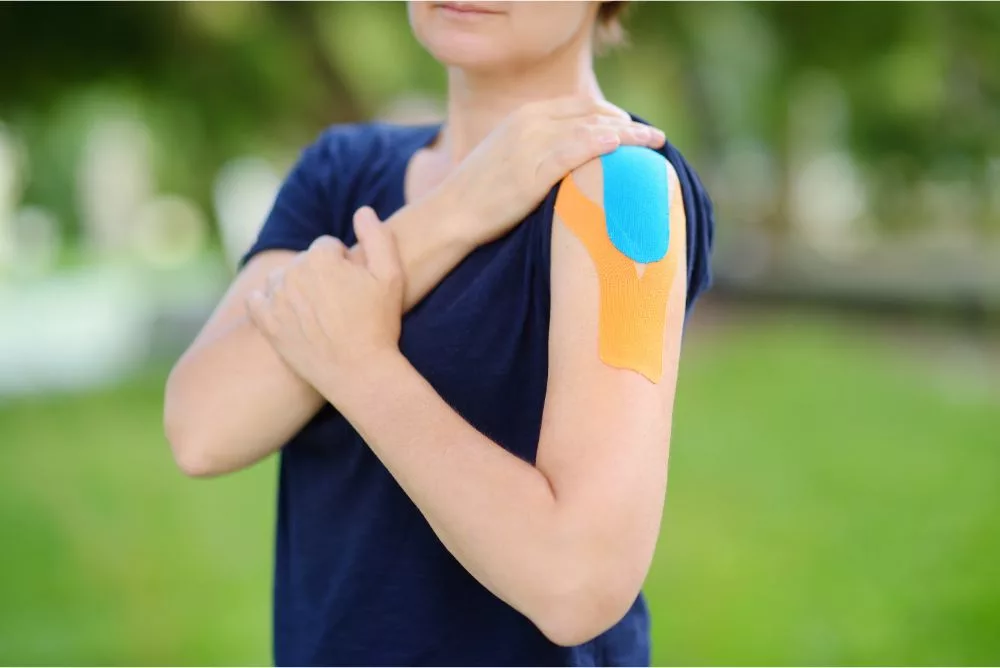
Get rid off Shoulder Bursitis with Kinesio Taping
What is Bursitis of Shoulder?
A bursa is a small fluid filled sac that helps to reduce friction between tissues of the body as they glide over each other. One of the major bursae is located at the shoulders adjacent to the tendons. Bursitis is the inflammation of this sac around the shoulder joint due to injury, chronic overuse or other causes. The inflamed bursa will also compress the neighbouring soft tissue resulting in pain and edema.
Signs and Symptoms
Bursitis is typically identified by the localization of pain or swelling and tenderness near the shoulder. Movement of arms or shoulder may also be affected. Shoulder bursitis may often be accompanied by tendinitis of tendons adjacent to the affected bursa. It can also cause a pinching or shooting pain when moving the elbow away from the body, also referred to as a sign of impingement.
How does Kinesio Taping help with shoulder bursitis?
Treatment of any form of bursitis depends on whether it is infected or not. However, infection of a shoulder bursa is not commonly heard of, it is mostly caused due to direct injury. During the first 24-72 hours of injury, the main focus of treatment is to reduce swelling. Along with ice compresses to the region, recommended rest, and anti-inflammatory and pain medication, the therapist may also recommend kinesio taping of the anterior deltoid (near the joint of the shoulder and arm in the front) and lower trapezium insertion (near the shoulder arch towards the spinal region). A similar taping may be done on the other side of the body, making a criss cross pattern. These tapings are attached with tension in order to support the muscles and provide ease of movement in spite of the injury.
In the next phase of treatment after 72 hours, the therapist may aim to reduce swelling and accumulation of lymph at the joint. This procedure may involve aspiration of the fluid using a needle followed by application of a space correction strip to create space between the skin and bursa to allow for edema reduction. This strip is applied over the deltoid tuberosity (from above your clavicle to the side of your arm) with no tension. In order to better notice convulations in the musculature, the patient might be asked to move his arm behind while taping.
In chronic shoulder bursitis, the patient might also be given an injection of cortisone steroid to help reduce the inflammation as taping techniques alone would not be very effective. Kinesio taping works well with physiotherapy as it does not hamper movement and provides additional support to the muscle, while also preventing further injury. In case of infected bursitis, the treatment may involve intravenous antibiotics and advanced hospitalization. You physiotherapist will be best equipped to diagnose your bursitis and determine if you would require additional treatment or taping for other problems such as rotator cuff injury, impingement and/or tendonitis.







